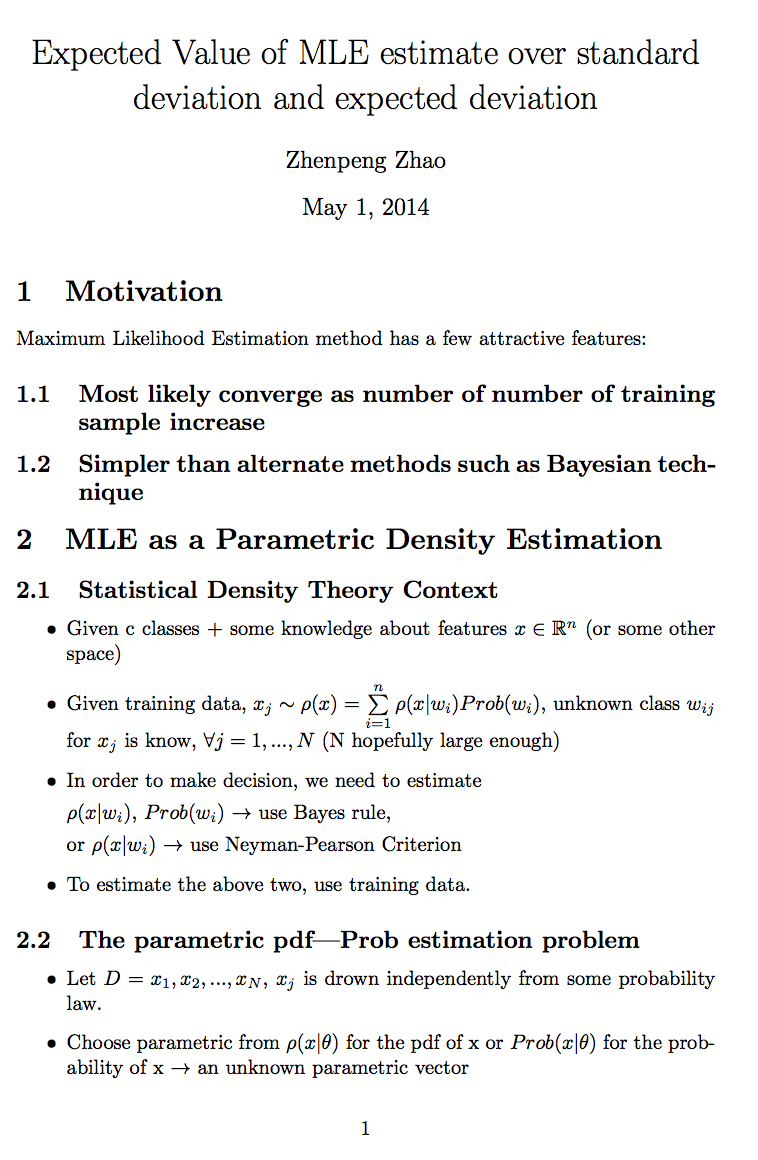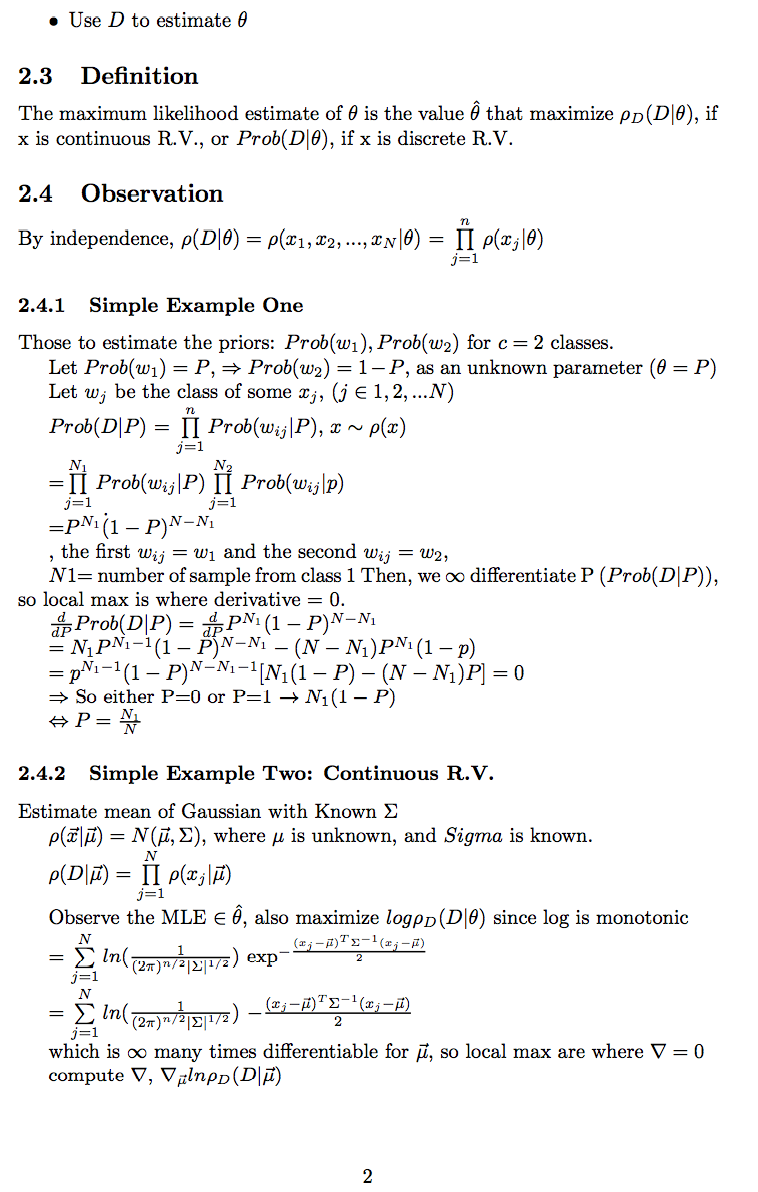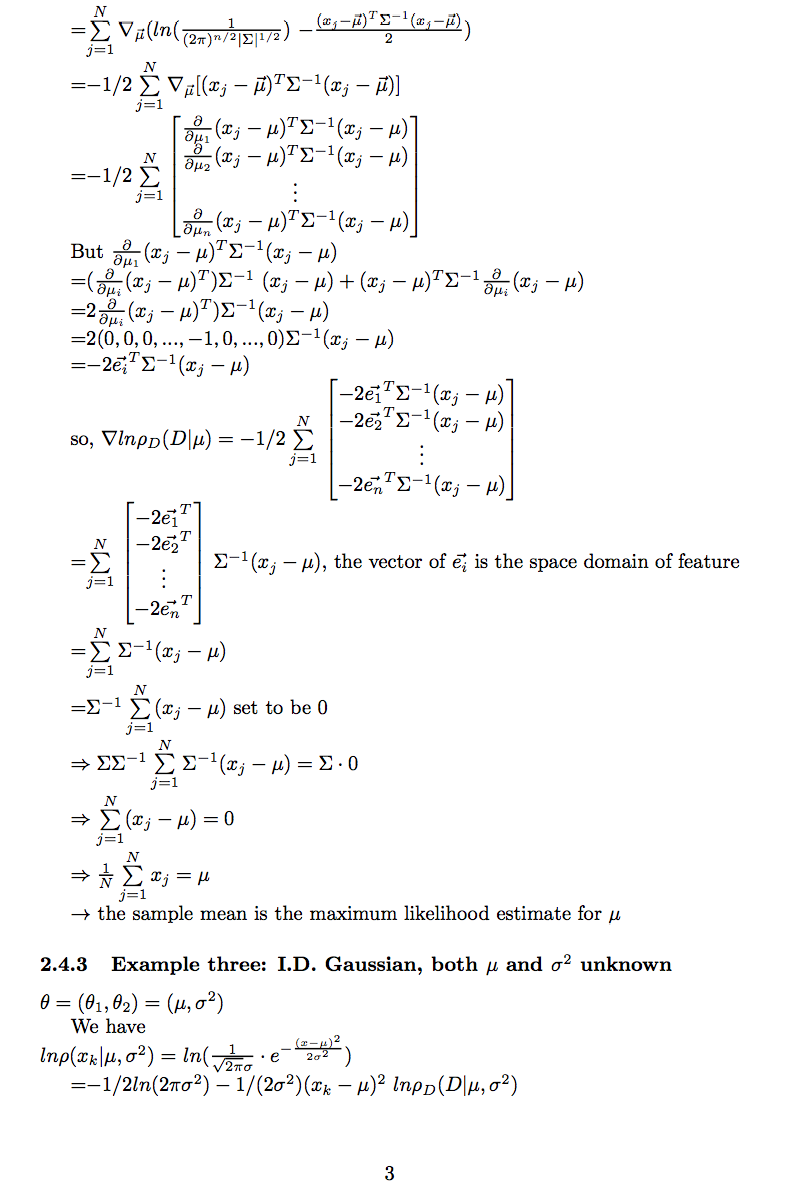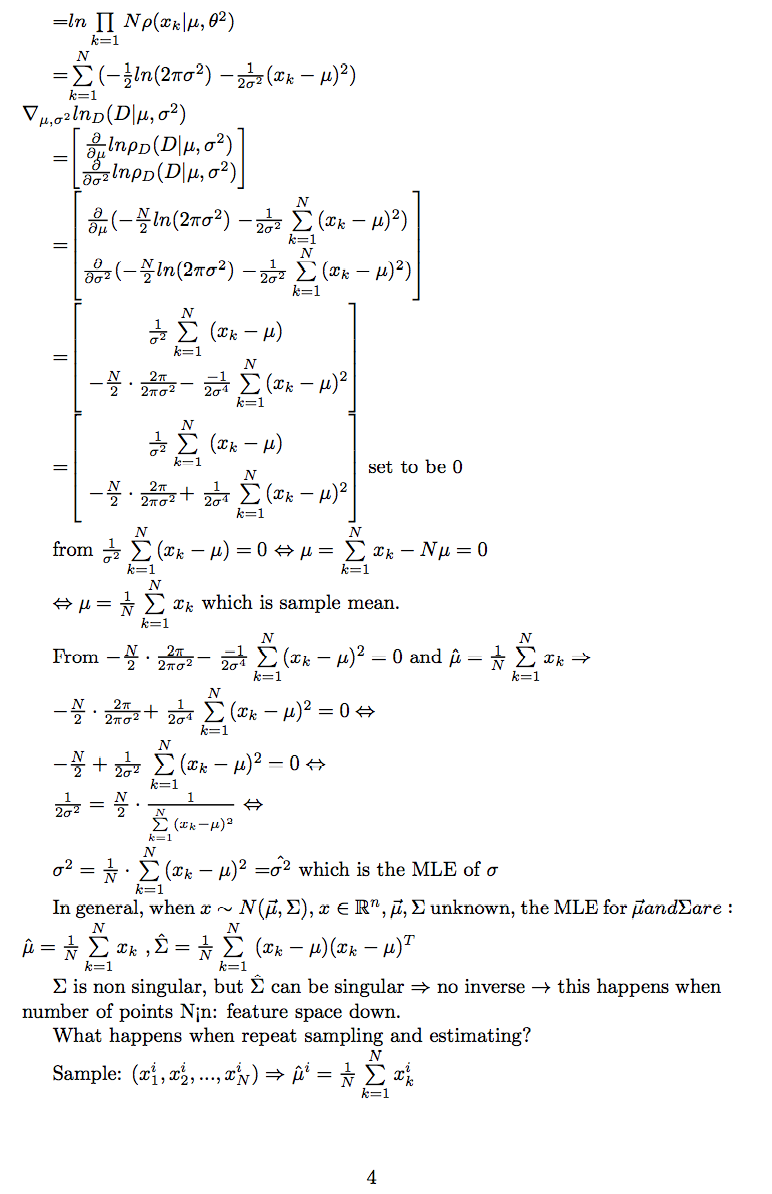Expected Value of MLE estimate over standard deviation and expected deviation
A slecture by ECE student Zhenpeng Zhao
Partly based on the ECE662 Spring 2014 lecture material of Prof. Mireille Boutin.
1. Motivation
- Most likely converge as number of number of training sample increase.
- Simpler than alternate methods such as Bayesian technique.
2. MLE as a Parametric Density Estimation
- Statistical Density Theory Context
- Given c classes + some knowledge about features $ x \in \mathbb{R}^n $ (or some other space)
- Given training data, $ x_j\sim\rho(x)=\sum\limits_{i=1}^n\rho(x|w_i) Prob(w_i) $, unknown class $ w_{ij} $ for $ x_j $ is know, $ \forall{j}=1,...,N $ (N hopefully large enough)
- In order to make decision, we need to estimate $ \rho(x|w_i) $, $ Prob(w_i) $ $ \rightarrow $ use Bayes rule, or $ \rho(x|w_i) $ $ \rightarrow $ use Neyman-Pearson Criterion
- To estimate the above two, use training data.
- The parametric pdf|Prob estimation problem
- Let $ D={x_1,x_2,...,x_N} $, $ x_j $ is drown independently from some probability law.
- Choose parametric from $ \rho(x|\theta) $ for the pdf of x or $ Prob(x|\theta) $ for the probability of x $ \rightarrow $ an unknown parametric vector
- Use $ D $ to estimate $ \theta $
- Definition: The maximum likelihood estimate of $ \theta $ is the value $ \hat{\theta} $ that maximize $ \rho_D(D|\theta) $, if x is continuous R.V., or $ Prob(D|\theta) $, if x is discrete R.V.
- Observation: By independence, $ \rho(D|\theta)=\rho(x_1,x_2,...,x_N|\theta) $ = $ \prod\limits_{j=1}^n\rho(x_j|\theta) $
- Simple Example One:
Those to estimate the priors: $ Prob(w_1), Prob(w_2) $ for $ c=2 $ classes.
Let $ Prob(w_1)=P $, $ \Rightarrow $ $ Prob(w_2)=1-P $, as an unknown parameter ($ \theta=P $)
Let $ w_j $ be the class of some $ x_j $, ($ j\in{1,2,...N} $)
$ Prob(D|P) $ = $ \prod\limits_{j=1}^n Prob(w_{ij}|P) $, $ x\sim \rho(x) $
=$ \prod\limits_{j=1}^{N_1} Prob(w_{ij}|P)\prod\limits_{j=1}^{N_2}Prob(w_{ij}|p) $
=$ P^{N_1}\dot(1-P)^{N-N_1} $
, the first $ w_{ij}=w_1 $ and the second $ w_{ij}=w_2 $,
$ N1 $= number of sample from class 1 Then, we $ \infty $ differentiate P $ (Prob(D|P)) $, so local max is where derivative = 0.
$ \frac{d}{dP} Prob(D|P)=\frac{d}{dP} P^{N_1}(1-P)^{N-N_1} $
$ =N_1P^{N_1-1}(1-P)^{N-N_1}-(N-N_1)P^{N_1}(1-p) $
$ =p^{N_1-1}(1-P)^{N-N_1-1}[N_1(1-P)-(N-N_1)P]=0 $
$ \Rightarrow $ So either P=0 or P=1 $ \rightarrow N_1(1-P) $
$ \Leftrightarrow P=\frac{N_1}{N} $
(create a question page and put a link below)
Questions and comments
If you have any questions, comments, etc. please post them on https://kiwi.ecn.purdue.edu/rhea/index.php/ECE662Selecture_ZHenpengMLE_Ques.






